An electron is projected as shown in fig. with kinetic energy K, at an angle θ=45∘ between two charged plates. Ignore the gravity.
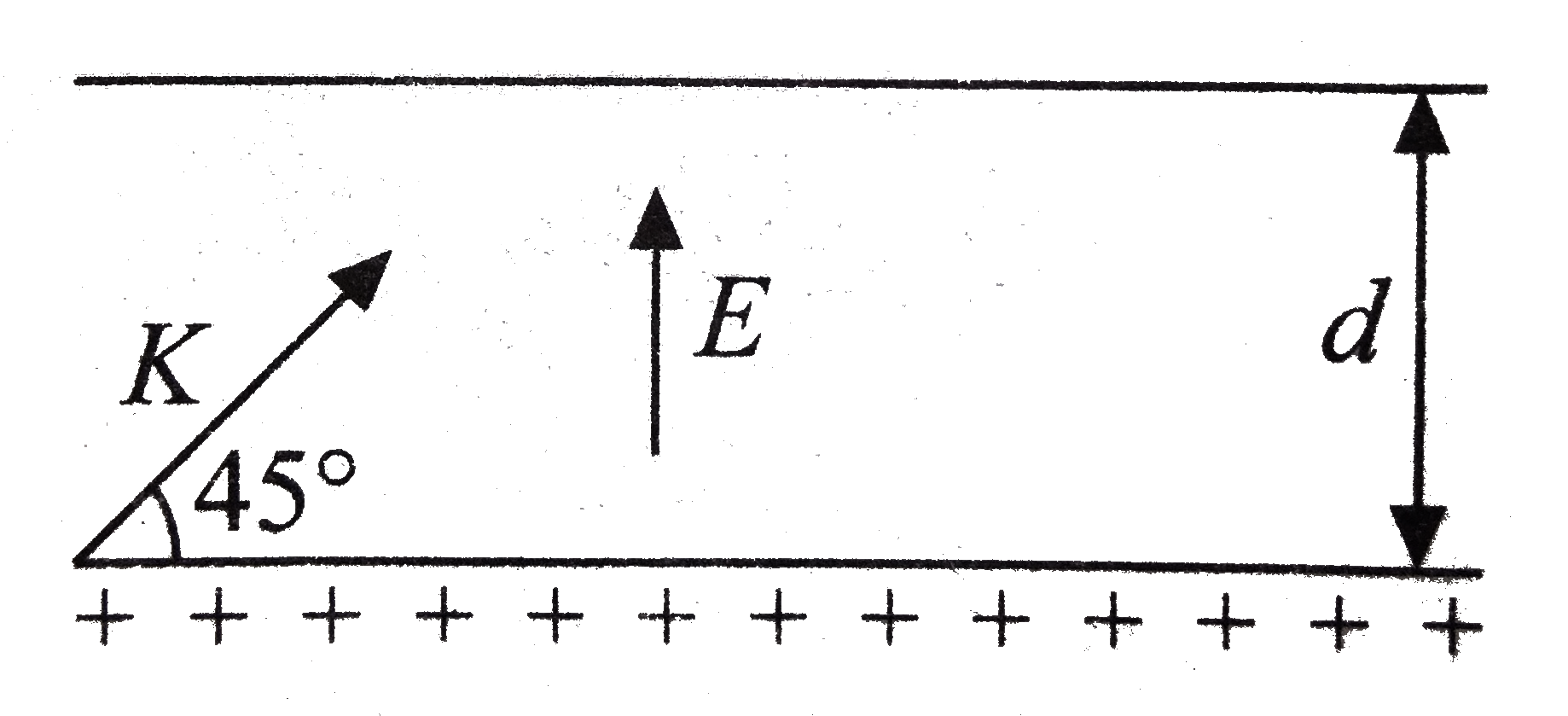
At what distance from the starting point will the electron strike the lower plate?
d
2d
3d
4d
The correct Answer is:D
d=u2sin2θ2a[a=qEm]
=mu2sin245∘2qE
d=K2qEor,E=K2dq
R=u2a=2dsin2θ=4d

Topper's Solved these Questions
- BOOK - CENGAGE PHYSICSCHAPTER - COULOMB LAW AND ELECTRIC FIELDEXERCISE - Integer8videos
COULOMB LAW AND ELECTRIC FIELD
- BOOK - CENGAGE PHYSICSCHAPTER - COULOMB LAW AND ELECTRIC FIELDEXERCISE - Single Correct Ansewr Type20videos
COULOMB LAW AND ELECTRIC FIELD
- BOOK - CENGAGE PHYSICSCHAPTER - COULOMB LAW AND ELECTRIC FIELDEXERCISE - Multiple Correct8videos
COULOMB LAW AND ELECTRIC FIELD
- BOOK - CENGAGE PHYSICSCHAPTER - COMMUNICATION SYSTEMEXERCISE - QUESTION BANK19videos
COMMUNICATION SYSTEM
- BOOK - CENGAGE PHYSICSCHAPTER - Current ElectricityEXERCISE - QUESTION BANK40videos
Current Electricity
Similar Questions

An electron is projected as shown with speed u. If electron just fails to strike the upper plate, find range. (distance from starting point at which electron strike the lower plate again). Consider only electric force.View SolutionThe plate of a capacitor are 2.00cm apert . An electron -prodon pair is released somewhere in the gap between the plates and it is found that the prolon reeaches the negative plate . At what distance from the negative plate was the pair released?
View Solution
Knowledge Check
- Question 1 - Select One
An electron is projected as in figure with kinetic energy K, at an angle θ=45∘ between two charged plates. The magnitude of the electric field so that the electron just fails to strike the upper plate, should be greater than:
 AKqdB2KqdCK2qdDiInifinite
AKqdB2KqdCK2qdDiInifinite - Question 2 - Select One
An electron enters the region between the plates of a parallel plate capacitor at an angle θ to the plates. The plate width is l, the plate separation is d. The electron follows the path shown just missing the upper plate. Neglect gravity. Then,
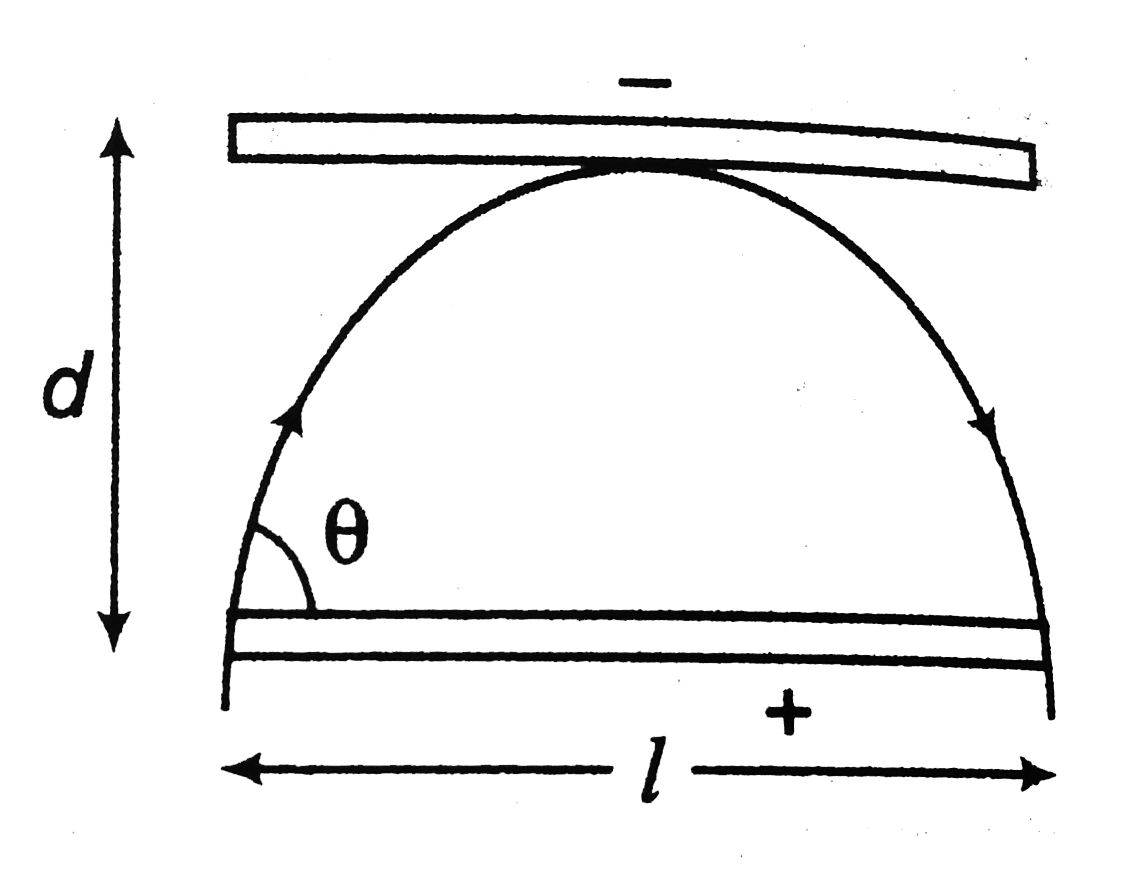 Atanθ=2dlBtanθ=4dlCtanθ=8dlDThe data given is insufficient to find a relation between d, l and θ
Atanθ=2dlBtanθ=4dlCtanθ=8dlDThe data given is insufficient to find a relation between d, l and θ - Question 3 - Select One
An electron passes between two parallel plate of a capacitor as shown in the diagram. The electron enters the plate at t=0 and it comes out of the plates at time t=T. The electron hits the screen at A, as shown. Now a time varying potential difference V is applied between the plates, as shown in the graph. (Neglect the gravity). The point where the electron now will strike (as compared to point A) will be
 Adeflected upBdeflected downCdeflected up then downDdeflected down then up
Adeflected upBdeflected downCdeflected up then downDdeflected down then up
There exists a uniform and constant magnetic field of strength B in the space betweent he plates of a charged parallel plate capacitor. The charge density on the plate is σ and length of the plate is l. An electron is projected in the space between the plates along the length of the plate. It is foudn that velcoity of the electron does not change. Find the time taken by the electron to come out of the capacitor. The figure describes the situtation. Ignore the gravity.
 View Solution
View SolutionA uniform magnetic field (B) is applied between the plates of a capacitor in the outward direction as shown in the figure. Surface charge density on the capacitor plates is σ.
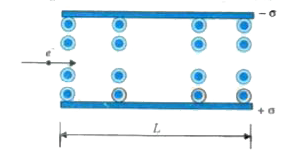
An electron is fired in between the plates, parallel to them, as shown in the figure. The electron is found to move straight in-between the plates of capacitor. Neglect the gravity. If L is the length of the plates then caleulate the time taken by the electron to cross the plates.View SolutionA paricle is projected at an anged θ from the horizontal with kinetic energy (T). What is the kinetic energy of the particle at the highest point ?
View SolutionAn electron (charge = e, mass = m) is projected horizontally into a uniform electric field produced between two oppositely charged parallel plates, as shown in figure. The charge density on both plates is ± σC/m2 and separation between them is d. You have to assume that only electric force acts on the electron and there is no field outside the plates. Initial velocity of the electron is u, parallel to the plates along the line bisecting the gap between the plates. Length of plates is 2L and there is a screen perpendicular to them at a distance L. (i) Find s if the electron hits the screen at a point that is at same height as the upper plate.
(ii) Final the angle q that the velocity of the electron makes with the screen while it strikes it.
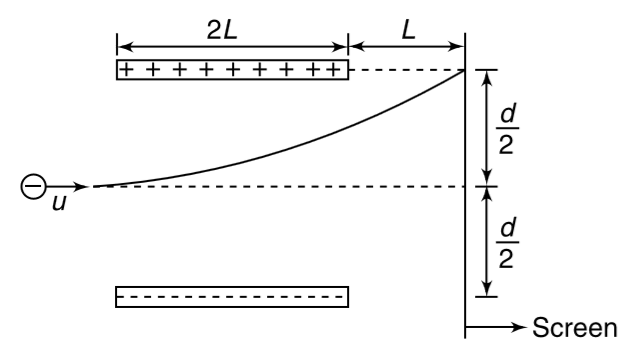 View Solution
View SolutionAn electron is projected from a distance d and with initial velocity u parallel to a uniformly charged flat conducting palte as shown. It strikes the plate after travelling a distance l along the direction of projection. The surface charge density of the conducting plate is equal to
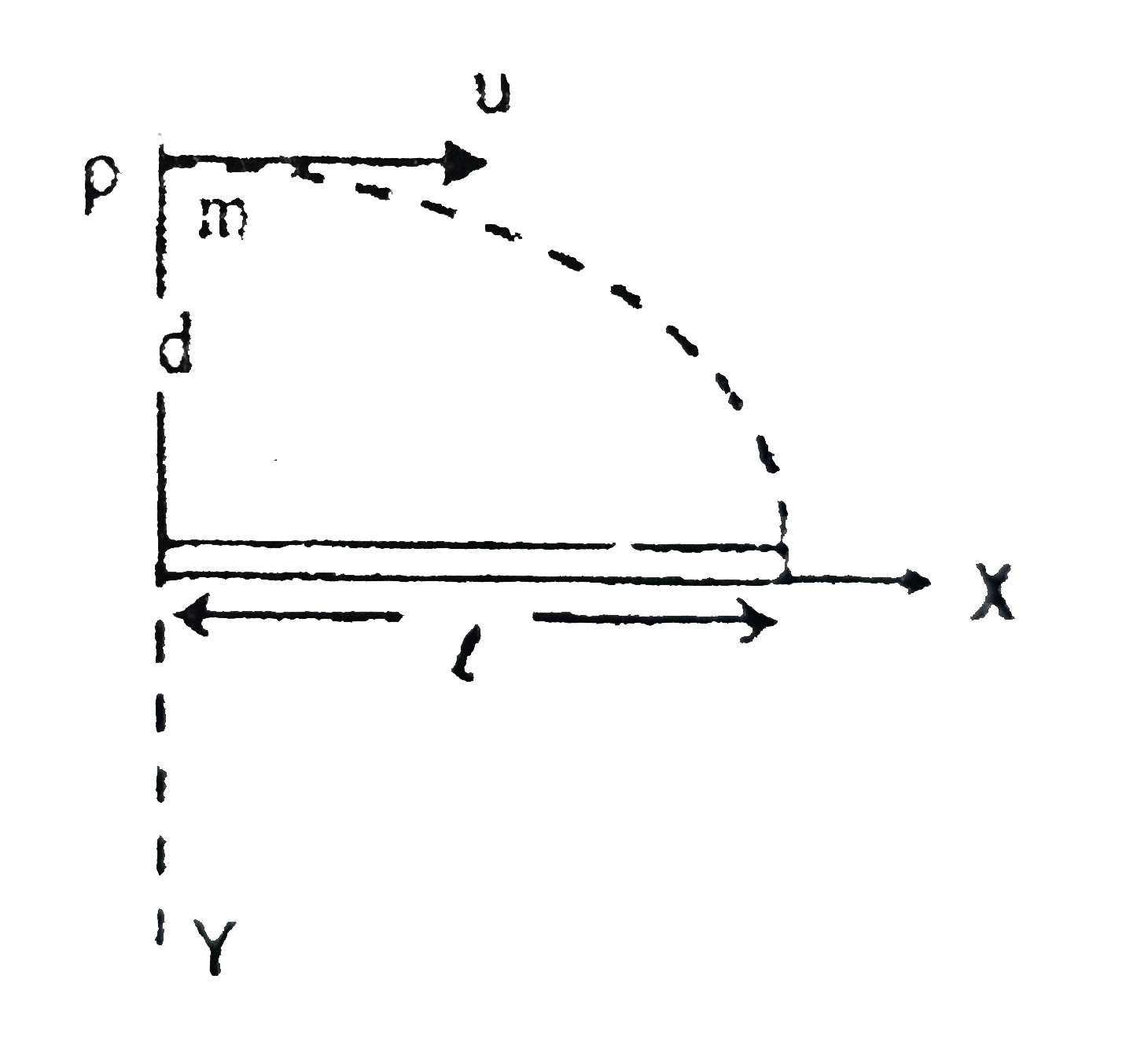 View Solution
View Solution
